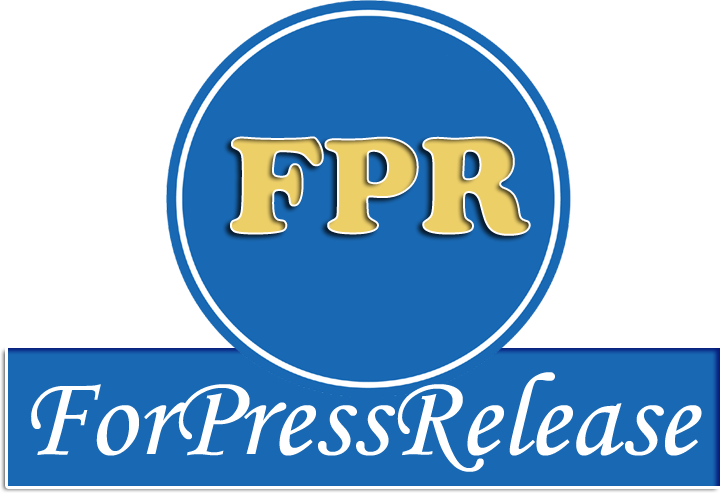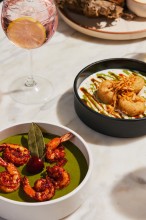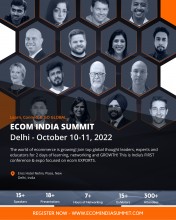- Premium electric vehicles and serial hybrids EXLANTIX will be presented at AVTODOM Varshavka
- Novotel Hyderabad Airport to host an extravagant Christmas Feast
- Revolutionizing Door Scheduling: RapidSpec Launches Advanced Software for Manufacturers
- Accor Celebrates Double Recognition at India’s Best Awards 2024
- Delhi Comes Alive with 'Voice of Colors' artist camp 2024 by Sahitya Kala Parishad
- ezPaycheck: Simplified In-house Payroll Solution Adds New e941 Feature for 2024
- Luxe Transfers LTD Launches Premier Luxury Chauffeur Services in Birmingham and Beyond
- Loren James Dance Company Revolutionises Dance Education with Premier Dance Schools in Cardiff
- Zee MPCG’s ‘Building New India’ Conclave Paves the Way for Madhya Pradesh’s Bright Future
- PerfectionGeeks Revolutionizes Mobile Solutions as a Leading Flutter App Development Company in Spain
- Items from The Merrill House in Natchez, Miss., are in Crescent City's January 17-18 Estates Auction
- Tajurba Business Network Hosted a Successful SME IPO Workshop, empowering over 100 SMEs
- Bangalore Hospitals Introduces India's First 640-Slice CT Scan
- Honda Motorcycle & Scooter India launches New 2025 SP125 - ‘Be Bold, Be Advanced’
- Protheragen-ING Releases Hundreds of APIs: Anti-Tumor APIs, Hypoglycemic APIs, Antipsychotic APIs, Bronchiectasis APIs, Antihypertensive APIs
 Mail to a Friend Mail to a Friend |
|
     |
Food Colors Market to be Driven by Rising Demand for Natural Food Colors

The report focuses on the recent developments and the latest trends shaping the global food colors market. The research study also elaborates on the key strategies companies are following to penetrate the global natural food colors market.
The U.S. Food and Drug Administration (FDA) regulates the food colors market. The FDA has approved several artificial food dyes in recent times. However, according to recent studies, these dyes are responsible for hyperactive behavior in children. Though regulators in the global food colors market have approved several dyes safe for human consumption, concerns regarding the safety of these food coloring substances are rising.
Browse full Food Colors Market report at: http://www.transparencymarketresearch.com/food-colors-market.html
This trend has resulted in an increased demand for safer, more natural food colors. Hence, companies in the global food colors market are focusing on innovation to develop natural, organic food color dyes that are safer than their synthetic counterparts. This shifting preference of consumers from synthetic to natural food colors is the most influential trend driving the global food colors market. The global food colors market is broadly segmented on the basis of application, product type, and geography.
Overview of the Global Food Colors Market
The global food coloring products market is fueled by the escalating demand for natural food colors in international markets. Furthermore, the rising application of food colors in several end-use industries is also driving the global food colors market. The global food colors market was worth US$1,614.6 million in 2011 and with a CAGR of 4.3% expected during the forecast period of 2012 to 2018, the market is expected to be worth US$2,153.5 million by 2018.
Request a Brochure of this Report :http://www.transparencymarketresearch.com/sample/sample.php?flag=S&rep_id=316
By product type, the global food colors market is divided into synthetic, natural, caramel, and natural-identical food colors. Synthetic food colors are produced using a wide variety of raw materials including corn syrup, sugar, red 3, yellow 6, blue 1, sodium benzoate, starch, etc. On the other hand, natural food coloring products are made using vegetable extracts or other extracts from naturally grown sources.
In 2008, the sector of synthetic food colors held the largest market share of 42%, trailed by natural food colors, which held a 27% share. Among natural food colors, the segment of beta carotene is projected to demonstrate the fastest growth in the next five years. On the basis of consumption, the global food colors market will witness a 3.8% CAGR during the forecast period.
Geographically, the global food colors market is segmented into Europe, Asia Pacific, North America, and RoW. Europe is anticipated to be the key regional market in the global food colors industry and occupy 32.6% of the market revenue by 2018. On the other hand, Asia Pacific is expected to deliver tough competition to the European food colors market.
Companies mentioned in the research report
The key companies operating in the global food colors market are LycoRed, GNT Group, DD Willamson, Sensient Technologies Corporation, Sethness Products, San-Ei Gen F.F.I. Inc., Hansen, DSM, WILD, Fiori Colori, Naturex, and Phytone. Companies in the global food colors market offering natural food colors are experiencing good growth. GNT, a Netherlands-based firm provides natural food colors and has experienced positive growth in the past three decades.
Major geographies analyzed under this research report are:
Europe
North America
Asia-Pacific
Rest of the World
This report gives you access to decisive data such as:
Market growth drivers
Factors limiting market growth
Current market trends
Market structure
Market projections for the coming years
Key highlights of this report
Overview of key market forces propelling and restraining market growth
Up-to-date analyses of market trends and technological improvements
Pin-point analyses of market competition dynamics to offer you a competitive edge
An analysis of strategies of major competitors
An array of graphics and SWOT analysis of major industry segments
Detailed analyses of industry trends
A well-defined technological growth map with an impact-analysis
Offers a clear understanding of the competitive landscape and key product segments
Browse the full Press Release:http://www.transparencymarketresearch.com/pressrelease/food-colors-market.htm
Company :-Transparency market Research
User :- Mr Atil
Email :-sales@transparencymarketresearch.com
Phone :---
Mobile:- -
Url :- http://www.transparencymarketresearch.com/food-colors-market.html


_thumb.jpg)






